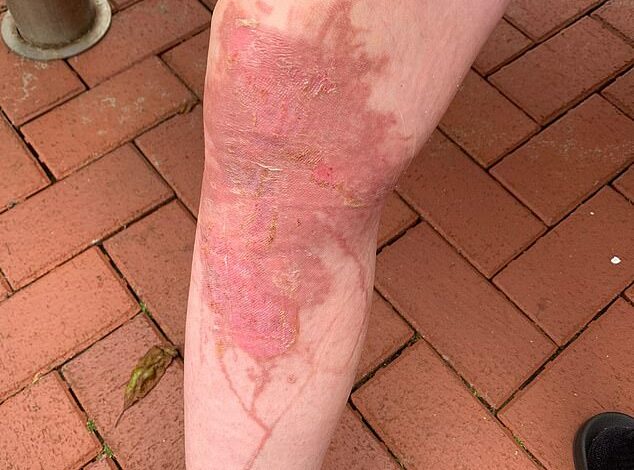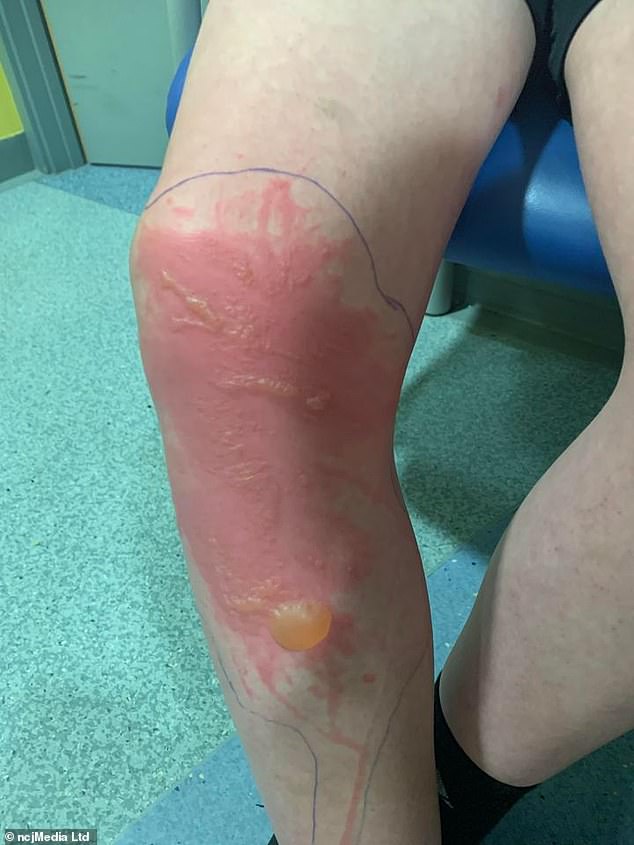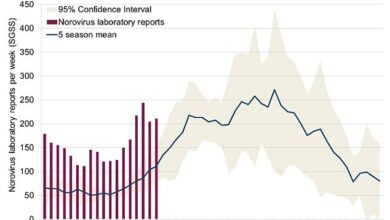13-year-old boy spends four nights in hospital after coming into contact with Britain’s most dangerous plant – and must now stay out of the sun for a year






A boy spent four nights in hospital after coming into contact with Britain’s most dangerous plant and must now stay out of the sun for a whole year.
Michael Taylor, 13, was rushed to Newcastle’s Royal Victoria Infirmary and will have to keep his legs out of the sun for the next 12 months after coming into contact with giant hogweed.
The plant, which is usually seen between June and August, is one of the most dangerous plants in the UK. The sap can cause painful, blistering burns that can recur for months or even years.
Michael missed two weeks of school because of his blisters, even though his mother clearly warned other children and parents about the dangers of the phytotoxic plant.
Michael first noticed a rash on his leg on Monday, June 24. Not knowing what the wound was, Fiona Scott treated it with antihistamine tablets and antiseptic cream.

Michael Taylor spent four nights in hospital and missed two weeks of school after a nasty encounter with a giant hogweed

Michael, 13, has been told to stay out of the sun for a whole year to allow his wounds to heal
But the next day, blisters started forming every 20 minutes, causing Michael a lot of pain.
After taking her son to the drop-in centre, Fiona was referred to the Emergency Department at the Royal Victoria Infirmary.
In the evening Michael was transferred to the children’s ward and on Thursday, June 27, he was transferred to the burns unit.
His legs were washed with cold water and placed on gas and air, after which a bandage with honey was applied to the wounds.
Michael remained in hospital for two more days before being allowed home with ‘very strong’ antibiotics and strict instructions not to remove the bandages.
On Wednesday, July 3, he returned to the hospital to have his wounds cleaned and treated, and only now are there signs that they are beginning to heal.
However, he must keep his legs out of the sun for the next year, as they are hypersensitive to heat and light.
It was a tough ordeal for the teenager, who normally enjoys playing outside on his bike near his home in Lemington, Wylam and Prudhoe.
Fiona said: ‘It’s absolutely awful. He obviously can’t go out, he can’t socialise with his friends.
“We were in the hospital for five days and he’s in a lot of pain. It’s not nice for a young person like him to go through that.”
Michael lies awake at night and cannot shower because of the pain caused by the hogweed burns.
However, he has no recollection of ever touching the plant, and neither he nor his mother knew that the plant was poisonous before his ordeal.
Fiona continued: ‘It’s probably something we’ve all walked past and we’ve probably never been burned by it. If we’d known right away that he’d touched it, we could have scrubbed it with cold water and Michael’s injuries might not have been as bad.
“But the fact that the plant is there is so scary, I would hate for a child to go through what Michael went through. It’s so surreal, I can’t believe it happened, all his friends are playing with him and I’m amazed it’s never happened before.”

Michael’s blisters on his legs were treated with cold water, gas and air, and a bandage of honey

Giant hogweed is one of the most dangerous plants in the UK, with sap that can cause painful burns and blisters
Giant Hogweed is an invasive species that ‘escaped domestication’ after being brought to the UK from Central Asia in 1893 as an ornamental plant. It is a relative of the Cow Parsley and can be recognised by its large, white, umbrella-like flower clusters.
It has a hollow, stiff stem that is spotted purple and prefers moist areas such as riverbanks. The plant can grow from 1.5 m to 5 m tall.
What should I do if I come into contact with giant hogweed?
According to the NHS, anyone who gets giant hogweed sap on their skin should wash the area thoroughly and immediately with soap and water, seek medical advice and avoid exposing the area to sunlight for a few days.





